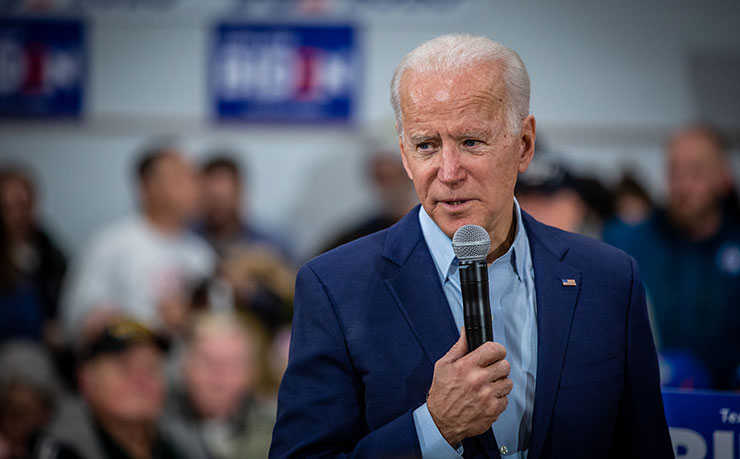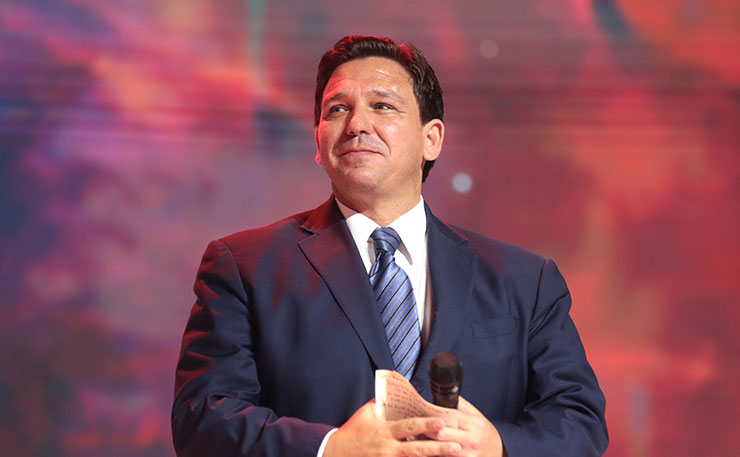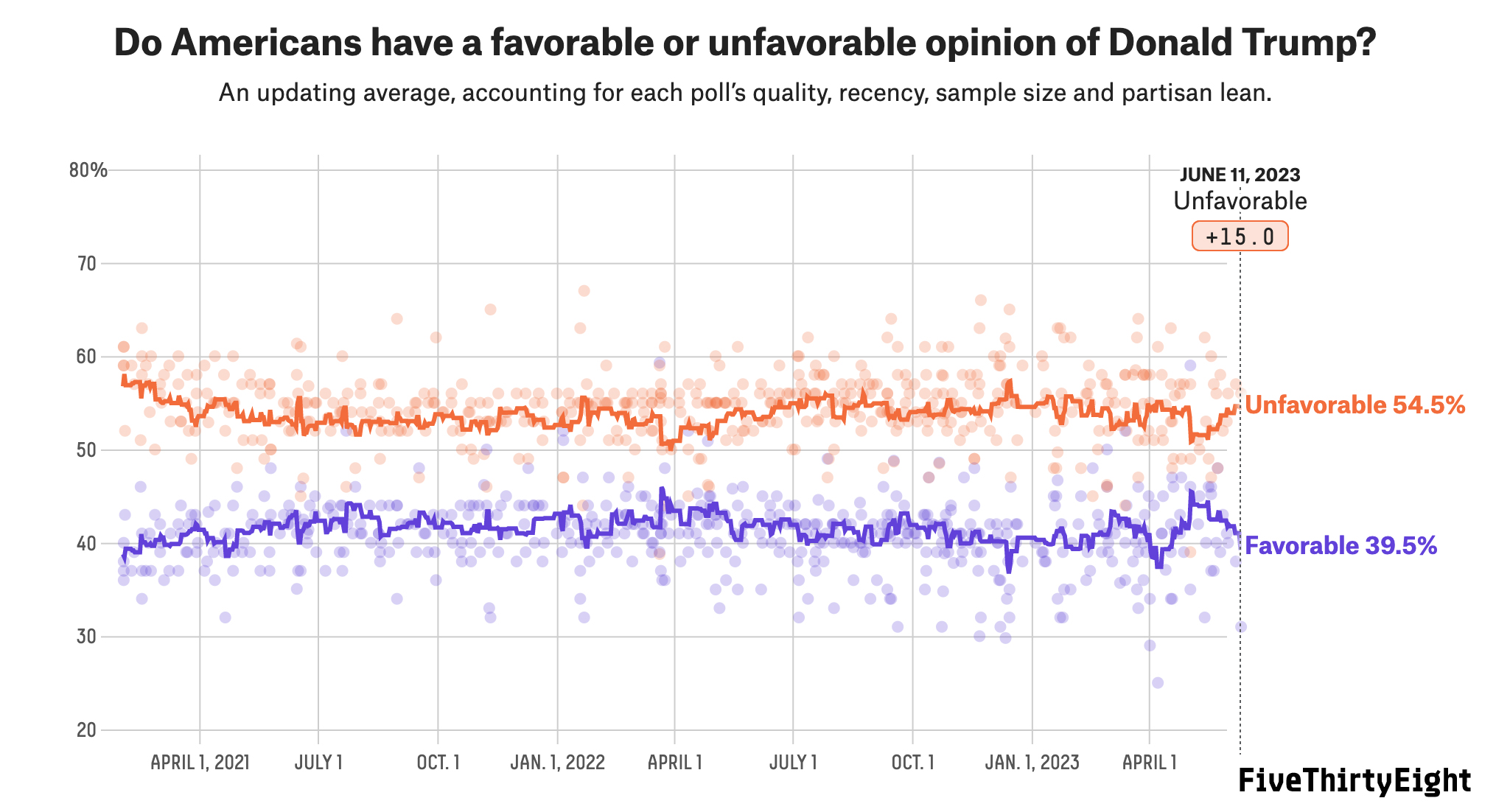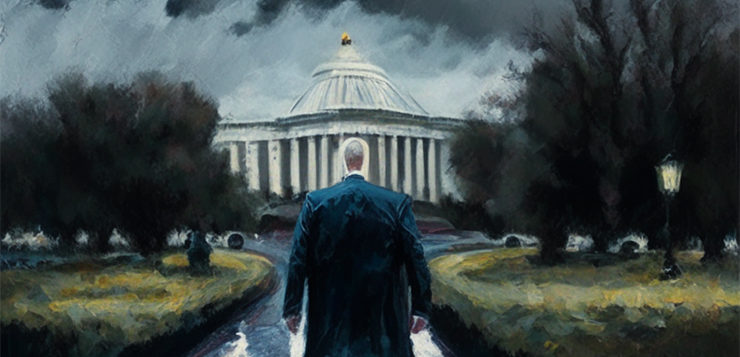They say when America sneezes, Australia gets a cold. Well, America’s poised to suffer another migraine, and his name is Donald Trump. Chris Graham outlines the path back to the White House for the world’s most dangerous leader, and explains just how short and wide it really is.
There’s no way Donald Trump could ever return to the White House, right? In just the course of the last few months alone he’s been criminally indicted on charges of falsifying electoral documents over his payment of hush money to porn star Stormy Daniels; he’s been found to have sexually abused writer E. Jean Carrol, in the 1990s; and this week he’ll be indicted again, this time on federal crimes related to the theft of top secret and classified documents.
And none of that even factors in the reality that he’s also facing investigation in Georgia over his conduct around the 2020 election, nor the Congressional and other investigations into the January 6 assault on the US Capitol building, an attempt led by Trump to prevent the certification of Joe Biden as the winner of the 2020 presidential election.
So even if Trump somehow manages to escape jail over the next 18 months, there’s no way Americans would vote him back in, right? Well… think again. Not only has Trump time and again proved his critics wrong, but his path back to the US presidency is a lot easier than you might think. And by ‘a lot’, I mean an American shit-tonne.
Based on voting in the 2020 election, there are six US ‘swing states’ which were won by Biden, but if won back by Trump in 2024 would more than deliver him enough electoral college votes to win back the presidency: Arizona, Georgia, Michigan, Nevada, Pennsylvania and Wisconsin.
The margins in four of those states are the definition of razor thin – they’re less than one per cent, and in the case of Georgia it’s a margin of just 0.12 per cent, or to be even more precise, 5,230 votes. In Arizona, the margin is 0.16 per cent (5,819 votes); and Wisconsin is 0.32 per cent (10,342 votes). That’s a total of just 21,462 votes, from more than 11 million voters.
Flipping just those three states in 2024 would deliver the 37 electoral college votes he needs to force a tie with Biden. An electoral college tie is then broken by the House of Representatives, which is currently controlled by the Republicans.
In other words, it’s not a big ask.
A week is a long time in politics, and we’re still 18 months out from the 2024 election, so a lot can happen between now and then. But what do the polls in those six states say today? And before we dive down into them, a quick tip: If you're inclined, the best place to follow US polls is at FiveThirtyEight.com. They compile polls from across the nation, so they're reporting is an aggregate, hence they're consistently right where others are wrong. One of their other great features is they give each poll a rating from ‘A to E’, which means you can not only get an average of a lot of polls, but you can also factor in the quality of the numbers while you do it.
Speaking of which… a poll last week in Georgia (with an ‘A’ rating by FiveThirtyEight) put Trump at 42 per cent, and Biden at 41. A poll in Nevada on May 23 put Trump at 48 per cent and Biden at 47, while an earlier May 18 poll had Trump at 48 and Biden at just 41.
Winning Georgia and Nevada isn’t enough for Trump to reclaim the presidency. He’d either have to also win Pennsylvania, or two of the other three remaining states (Arizona, Wisconsin or Michigan). The latest polling gives Biden a slight lead in those four states.
- A mid-May poll in Arizona had Biden two points ahead at 46 to 44 per cent;
- A mid-April Wisconsin poll had Biden ahead by three points, 47 to 44 per cent;
- A mid-April Michigan poll had Biden three points ahead, at 45 to 42 per cent; and
- A mid-April Pennsylvania poll had Biden ahead four points, 46 to 42 per cent.
But here’s the twist. In Arizona in March, a Rasmussen poll – generally regarded as reliable by FiveThirtyEight - had Trump 11 points ahead of Biden, 50 to 39 per cent. That’s a very big lead, well beyond the margin of error of most polls (usually around three points). In Wisconsin in November last year, Trump was ahead 10 points, and ahead six points in Pennsylvania. In October he had a three point lead in Michigan.
The point being, the polls by no means write Trump off – in fact they’re best described as ‘consistently mixed’ for Trump, which means he’s very much in with a chance, and doing a lot better than he was in 2016 when he won the US presidency, amid polls that consistently said he would lose by a landslide.

More strikingly, if you look at the national polling results, it routinely shows Trump and Biden jockeying for position, with both winning and losing. And if you look only at the highest rated polls by FiveThirtyEight - the New York Times/Sienna College poll, and the Selzer & Co poll produced by Grinnell College, both of which are rated A+ - the most recent poll from Selzer & Co was a 40-40 even split, and the most recent NY Times poll (held in October last year) was won by Trump by one point (45-44).
Long story short, Trump is very much in a neck and neck race with Biden, and while voting trends at the 2022 mid-term elections seemed to reject a lot of Trump-endorsed candidates, the US presidential race is a very different beast.

The other race
In terms of Trump’s lead over other Republican candidates vying for the presidency, he not only remains the presumptive favourite for the Republican nomination, but the longer the campaign for president goes on, the more his lead grows.
When second placed favourite and Florida governor/culture wars warrior Ron DeSantis finally officially entered the race on May 26, his polling numbers went nowhere. At the same time, Trump’s increased slightly.
It’s early in the race, but Trump has consistently held a lead over DeSantis of around 40 points. By contrast, in 2015, Trump gradually built a lead in the polls over time, but occasionally lost one to various candidates such as Ted Cruz.
Of course there’s other factors in the re-election of Donald Trump to the White House, particularly Joe Biden, and specifically his unpopularity with the American people. Biden’s approval rating, according to polling compiled by FiveThirtyEight, hit negative territory in August 2021, the first year of his presidency, and it hasn’t recovered since.
Today, it’s at 41 per cent approval (up from his lowest score of 37), while 55.2 percent of voters disapprove. They’re not unusual numbers for a sitting president – Trump’s lowest approval rating in office was 34 per cent, Obama’s was 38 – but it’s not helpful if you’re trying to win a second term.
At the same time, Trump’s ‘favourability rating’ – whether or not voters have a favourable or unfavourable view of him, is sitting at 39.5 per cent, with 54.5 of voters having an unfavourable view of him. That means more people ‘like’ Biden, but less people ‘dislike’ Trump.

There’s also the issue of the Democrats’ extraordinary capacity for self-harm, and its innate ability to snatch defeat from the jaws of what looks like almost certain victory. Because don’t forget, Trump enjoyed four years in the White House in large part thanks to the corruption of the Democratic National Convention, the process created to select the Democrats’ nomination for a presidential run.
The DNC is supposed to be an unbiased governing body, but the leak of tens of thousands of emails and attachments in 2016 (remember Wikileaks?!) revealed the party leadership actively worked to undermine the candidacy of Bernie Sanders for the Democratic nomination. This was despite consistent polling showing he was the preferred candidate over Hillary Clinton.
History obviously recalls the outcome – Trump defied the polls and won the race, despite the fact Clinton also outspent him in campaigning by a factor of two (Clinton’s bill at the end was almost $800 million, compared to Trump’s $440 million).
Running the unpopular Clinton instead of Sanders meant that less Democrat voters turned out than the two previous elections won by Obama. But in 2020, the Democrats failed to learn the lesson of 2016, selecting Joe Biden as their candidate for the presidential election, despite more polls showing Sanders as the leading candidate.

Biden defeated Trump convincingly on electoral college votes, but as the table above reflects, the actual difference between winning and losing the White House was just over 20,000 votes in three states.
Now in 2024, the Democrats are effectively stuck with Biden, despite a majority of Americans believing Biden is too old to serve a second term as president (67 per cent, if you believe a recent Yougov poll), and that Vice President Kamala Harris is too inexperienced.
At the risk of labouring the point, an NBC News poll in April found 70 per cent of Americans thought Biden should not re-run; and a Washington Post/ABC poll in May found that only 33 per cent of Americans thought Biden had the physical health to serve a second term, and 32 per cent thought he had the mental sharpness. And yes, these polls were all taken well before Biden’s latest public fall, earlier this month.
Long story short, Donald Trump is anything but finished. While Biden continues to stumble and mumble his way through campaign events, losing support along the way, Trump has already proven that criminal conduct doesn’t turn away masses of voters, let alone affect his base.
So watch this space.
Donate To New Matilda
New Matilda is a small, independent media outlet. We survive through reader contributions, and never losing a lawsuit. If you got something from this article, giving something back helps us to continue speaking truth to power. Every little bit counts.




